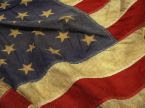
The Real Story behind the Political Parable " The Wizard of Oz " and the America’s Unknown Depression of the 1890's.
We are right back on the yellow brick road again! Another case to be made for history repeating itself.
Future historians will look back on this period of America’s history as possibly one of the most unique times the public has ever survived. It started with a Republican president and 20 years of legislation, which had consistently favored large corporations to the detriment of smaller companies and the average person. It was a period of major consolidation in industry, oil companies buying other oil companies, transportation industries buying the less fortunate. Even though they were remembered as good times financially, many companies struggled to make a profit in those years, constantly downsizing. But their executives didn’t care; they cared only about the price of their company’s stock - which was where they derived the vast majority of
their annual compensation.
But while a few such industry captains got rich in this period, increasing numbers of Americans were sliding below the poverty line. Farmers were in trouble, and no one in Washington seemed to care. Finally, a constant topic of discussion became stemming the flood of immigrants into this country; the fear that we would lose control of our sovereignty became widespread.
No, I’m not talking about today. I’m talking about the events that led up to one of the worst depressions in American history, known as the Panic of 1893.
Now, if I asked you to describe the 1890s in a sentence, most people would refer to that period as the Gay Nineties. But, that’s the power of Hollywood talking: Things couldn’t have been less gay. The 1890s were one of the most desperate times in our history, one of the lowest points for mankind our country has ever endured.
Today we think of the period after the Civil War as one of the stronger times for immigration and growth in America. We remember the words at the bottom of the Statue of Liberty, “Give me your tired, your poor, your huddled masses yearning to breathe free. The wretched refuse of your teeming shore.” Here’s what we could have added: “and we’ll make them our hungry, poor and wretched refuse.” Because that’s exactly what we did.
American industry before 1893 was dominated by railroads, packing plants, steel industries and the like. However, for the laborer or industrial worker, more often than not a recent immigrant, wages were so low that even working a 96-hour week, a man couldn’t afford a place to live and food to feed his family. It’s true: Streetcar drivers in New York City earned $12 for working 16-hour days, six days a week. When they attempted to lobby for a mere 12-hour day, none other than Teddy Roosevelt, then a New York Assemblyman, branded them Communists.
Living quarters for the poor were squalid tenement apartments. Typically 12-by-12 rooms, they had no windows, no bathrooms, no fresh air ventilation. Many tenements were firetraps; it was common for one to burn down, killing all its residents. Moreover, laws had been enacted that protected the tenement buildings’ owners to the absolute exclusion of individual renters’ rights. This was a lucrative business: One of the biggest tenement landlords in New York, the Vanderbilt family, amassed much of its wealth from preying on the poor.
Toward the 1890s farmers, which comprised most of our citizens, found themselves earning less money than it took to grow their crops. A farm crisis; sound familiar? No, unless you were a Vanderbilt, an Astor, a Huntington, Rockefeller, or Carnegie, life in America wasn’t that great as the century drew to a close. It was about to get much worse.
Railroads are the symbol of our nation’s might in the period just before the Panic of 1893. Yet, because of their rapid expansion, they often made little money; owners preferred to make their millions by manipulating their stocks’ prices.
America was on the gold standard, with $190 million in bullion for reserves. However, silver mining interests in the West had managed to get legislation passed contracting our government to buy all the silver they produced. In effect, our currency should have been backed by both gold and silver, but it wasn’t - and things were about to go very wrong.
It probably started in 1890. That’s when the Barring Brothers investment banking firm in London, the major underwriter of our own Atchison Topeka, and Santa Fe railroad, collapsed financially. Panic started setting in.
Three years later, on May 4th, 1893, National Cordage, our largest maker of rope, suddenly folded. As America sat stunned, unable to believe that had happened, suddenly European countries started a run on our gold reserves, refusing to accept treasury bonds. Then the price of silver collapsed, making it impossible to back our currency with it.
Once the bad news hit there were runs on our banks; 128 closed in June of 1893 alone. At the end of that July, the Erie Railroad failed. In all, during 1893 15,000 companies collapsed, more than 500 banks closed, and 30% of our railroads, including the Santa Fe and the Union Pacific, became insolvent. Still sound like the nineties were gay?
Within two years we had less than $61 million in gold reserves. Our farmers were forced to burn their own corn to stay warm in the winters, because no produce buyer had the money to buy the crops. Unable to care for their children, destitute parents abandoned them; in Detroit alone it was estimated that thousands of abandoned children walked the streets begging for food and shelter.
Wages already below the poverty line were cut dramatically. And when workers struck, as in the
Pullman Strike, the National Guard would be called out to protect the industrialists. Violence toward workers by our government included killing individuals who were just asking for a living wage. Labor riots would mark the next four years.
Pullman Strike, the National Guard would be called out to protect the industrialists. Violence toward workers by our government included killing individuals who were just asking for a living wage. Labor riots would mark the next four years.
Right here in Dallas our population actually fell during that period. Some local banks failed, and our flour and lumber industries all but disappeared.
One historian wrote that it is easy to spot photographs from this period; the average Americans in them are hungry, walking skeletons, with deeply sunken eyes. It was nothing less than the near total collapse of our economic system.
The Populist movement formed, primarily of farmers. Desperate to raise the prices of their farm
produce, they lobbied to get our currency insured with both silver and gold, but to no avail.
Evictions of the poor in New York were so frequent that one court averaged 150 cases a day. No one who lived through this time in America would ever forget it: Everyone suffered.
produce, they lobbied to get our currency insured with both silver and gold, but to no avail.
Evictions of the poor in New York were so frequent that one court averaged 150 cases a day. No one who lived through this time in America would ever forget it: Everyone suffered.
By 1898 the depression was coming to an end, finished off by our entry into the Spanish American War. But now you know why Henry Ford wanted to save the farmers, why he thought that by giving his car to the masses he could make their lives better.
For Ford created the Model T just 10 years after the end of The Panic of 1983. And now you know why his creation of a new middle class of laborers, beginning
with his five-dollar day, was a watershed event in this country, as was the 40-hour workweek
he instituted in 1927.
For Ford created the Model T just 10 years after the end of The Panic of 1983. And now you know why his creation of a new middle class of laborers, beginning
with his five-dollar day, was a watershed event in this country, as was the 40-hour workweek
he instituted in 1927.
Yes, the financial panic of 1893 marked the end of the Gilded Age in America. It was also the pivotal point at which we went from being a nation that built for industry to becoming one that would ultimately be driven by consumers. So how come you never heard of this calamity? Why did you grow up thinking that the Great Depression is the only one America had suffered? You may not have learned about it in school, but you’ve seen the movie; every parent gets the children to watch it. You just didn’t realize that the movie represented America in the Financial Panic of 1893.
L. Frank Baum was a failure at many things. In the late 1880s he lived in Aberdeen, South Dakota; he owned a general store and a newspaper there that failed. But he was in the perfect position to understand the farmers’ plight, and to see with his own eyes how strongly they believed that they were being held hostage by the rail owners and Eastern banking syndicates.
Moving to Chicago, Baum was a reporter during this Depression; and in 1900 he published his political and symbolic parable, a roman á clef about the Financial Panic of 1893: The Wonderful Wizard of Oz. Here’s the key to the cast of characters: Dorothy represents the Average American. The tornado is the Depression of 1893, destroying everything in its path and ripping apart families.
Dorothy drops into the Land of the Munchkins, who represent common labor; small and insignificant, they’re enslaved by the Wicked Witch of the East - the Eastern industrialists. Dorothy sets labor free by killing the industrialist witch. But she wants to go back to her home, over the rainbow - signifying the real promise of America.
In the movie she’s given ruby slippers - but in the book they are made of silver. And she follows a yellow brick road; those two symbols stood for the farmers’ conviction that using both gold and silver would put us on the path back to prosperity.
The Good Witch of the North is the progressive voters of the Northern states. The Scarecrow represents the farmers; the average person believed they had no brains, but L. Frank Baum knew that they were in fact fairly clever.
The Tin Man is America’s industrial workers. Incapable of taking care of himself, he can’t even oil his own joints.
The Lion, who fears combat but is fearless when challenged, is Populist candidate William Jennings Bryan. And the Wizard of Oz is the president of the United States, a fraud who deceives people; he tells Dorothy to kill the Wicked Witch of the West - land and mortgage bankers.
So she does that, and the Good Witch of the South - not shown in the movie, but representing in the book the South’s progressive voters - tells Dorothy, the American people, that she can always go home by clicking her silver heels. Meaning that if they’d used the silver for currency reserves, then things would have stayed just fine.
That’s right, The Wizard of Oz is a political parable. It envisions killing the industrialists, who held laborers hostage, and bankers, who owned farm mortgages. It showed the president as a man who first deceived everyone, then set the workers free. And finally, the Progressive voters in the North and South, shown as the good witches, let us know that if America would follow the gold road, and click our silver heels, we would again become a nation of liberty, equality and wealth for all.
You may never have known how tragic the 1890s were in America. You may not have learned that a depression happened then, or that it destroyed so many families. But you’ll never be able to watch The Wizard of Oz again without being reminded of it.
by Ed Wallace













No comments:
Post a Comment